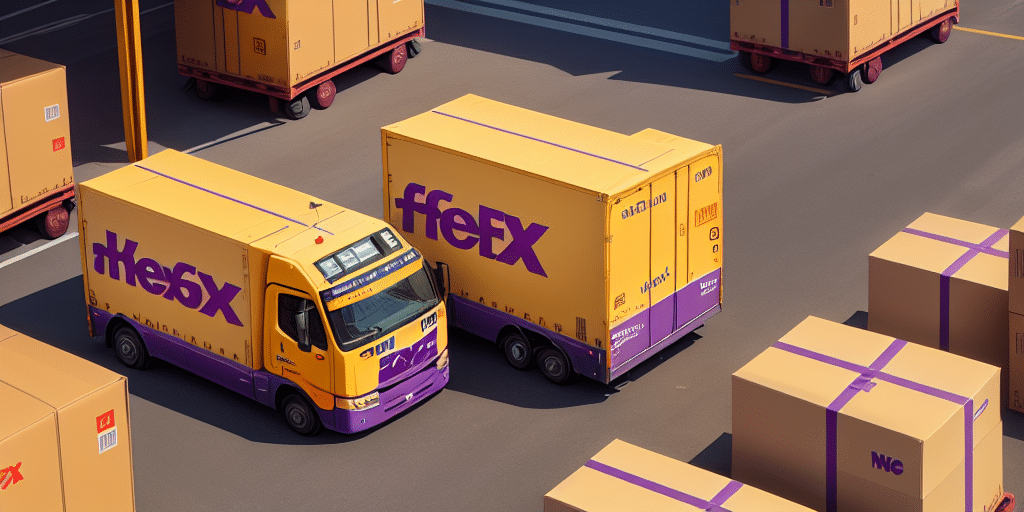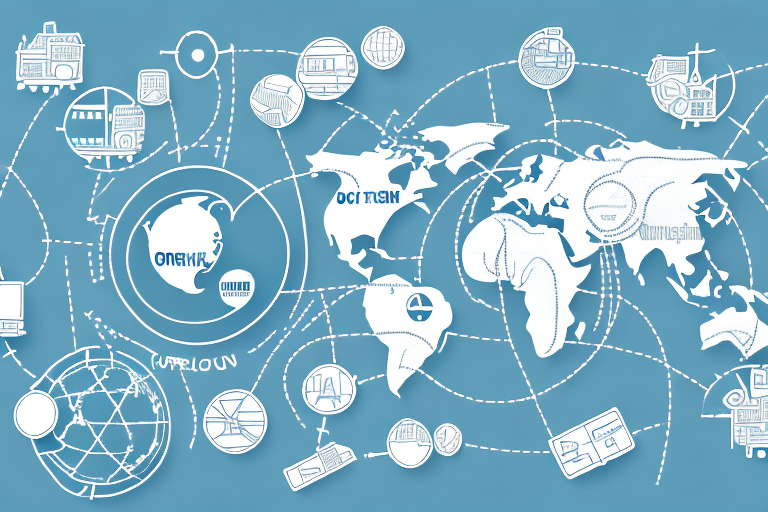Understanding the National Motor Freight Classification (NMFC) System
The National Motor Freight Classification (NMFC) system is a standardized method used in the freight industry to classify and rate different types of goods for shipment. It is a vital tool for shippers, carriers, and freight brokers alike, as it helps ensure that freight is transported safely and efficiently while providing a means of determining shipping costs.
The History of the NMFC System: How It Came to Be and Its Purpose
The NMFC system was first introduced in 1936 by the National Motor Freight Traffic Association (NMFTA), a nonprofit organization that oversees the regulation and classification of motor freight shipments. The primary purpose of the NMFC system was to provide a uniform and consistent method for classifying freight, which helps standardize shipping rates and charges, ensuring that freight is classified and transported safely.
Over the years, the NMFC system has undergone several revisions and updates to keep up with the changing needs of the industry. Notable milestones include:
- 1956: Expansion to include air freight.
- 1960: Further expansion to include rail shipments.
- 1992: Introduction of the Uniform Bill of Lading, standardizing the documentation process for motor freight shipments.
- Recent Updates (2023): Incorporation of e-commerce growth and sustainable shipping practices.
How the NMFC System Works: A Comprehensive Overview
The NMFC system assigns a freight class to each type of commodity based on four primary factors: density, stowability, handling, and liability. There are 18 different freight classes, ranging from Class 50 (the least expensive) to Class 500 (the most expensive). The freight class is determined by the weight per cubic foot of the shipment, calculated by dividing the weight of the freight by its volume.
In addition to the freight class, the NMFC system utilizes freight codes to identify the type of freight being shipped. These codes describe specific characteristics of the freight, such as shape, size, and handling requirements.
It's important to note that the NMFC system is not the sole factor determining shipping costs. Other factors, such as the distance of the shipment, mode of transportation, and any additional services required, also impact the final cost. According to the NMFTA 2023 Freight Index, accurate classification can lead to cost savings of up to 15% for shippers.
The NMFC system is regularly updated to reflect industry changes and new types of commodities. Shippers should stay informed about these updates to ensure accurate classification and avoid potential penalties or fees for misclassification.
The Different Classes of Freight According to the NMFC System
The NMFC system categorizes freight into 18 different classes based on density, stowability, handling, and liability. The classes are as follows:
- Class 50
- Class 55
- Class 60
- Class 65
- Class 70
- Class 77.5
- Class 85
- Class 92.5
- Class 100
- Class 110
- Class 125
- Class 150
- Class 175
- Class 200
- Class 250
- Class 300
- Class 400
- Class 500
While the NMFC system is the predominant classification method in the United States, other systems exist internationally and for specific purposes. Notable alternatives include:
- Harmonized System (HS): An internationally standardized system used for classifying goods for import and export.
- Standard Carrier Alpha Code (SCAC): A unique two to four-letter code used to identify transportation companies.
Understanding the differences between these systems is crucial for shippers involved in international trade.
Factors That Affect Freight Classification Under the NMFC System
Several factors influence the classification of freight under the NMFC system:
- Density: The weight per cubic foot of the shipment.
- Stowability: How easily the freight can be stored and secured during transit.
- Handling: The ease or difficulty involved in loading and unloading the shipment.
- Liability: The potential for damage or loss during transportation.
Additional factors include:
- Mode of Transportation: Different regulations and requirements for air, rail, and truck shipments.
- Fragility: Susceptibility to damage, affecting handling requirements.
- Value: Higher-value items may require additional insurance or security measures.
For example, a shipment of fragile electronics will have different classification considerations compared to bulk raw materials. According to the Federal Highway Administration 2023 Report, accurate classification based on these factors can reduce damage incidents by up to 20%.
How to Determine the Appropriate Class for Your Freight
Determining the appropriate freight class involves several steps:
- Calculate Freight Density: Divide the weight of the freight by its volume (weight in pounds ÷ cubic feet).
- Refer to the NMFC Manual: Use the manual to match your freight's characteristics with the corresponding class.
- Use a Freight Class Calculator: Online tools can simplify the calculation process by inputting weight, dimensions, and other relevant data.
- Consult with Industry Experts: Freight brokers and experienced carriers can provide guidance on accurate classification.
Accurate classification not only affects shipping costs but also impacts liability and insurance coverage. Misclassification can result in additional fees or increased risk of damage. Utilizing resources like the NMFTA resources can aid in achieving precise classification.
Common Mistakes to Avoid When Classifying Your Freight
Avoiding common errors ensures accurate classification and prevents unnecessary costs:
- Incorrect Measurements: Failing to accurately measure weight and dimensions can lead to incorrect class assignments.
- Misidentifying Freight Characteristics: Overlooking factors like fragility or handling requirements affects classification.
- Ignoring Mode of Transportation: Different transportation modes have distinct classification standards.
- Not Staying Updated: Failing to keep up with NMFC updates can result in using outdated classification information.
For instance, neglecting to account for increased shipment sizes due to the rise of e-commerce can lead to misclassification. Regular training and utilizing updated resources can mitigate these mistakes.
The Impact of NMFC Codes on Shipping Rates and Costs
NMFC codes play a crucial role in determining shipping rates and overall costs. The freight class assigned to a shipment directly influences the cost, with higher classes typically resulting in higher shipping fees. Proper classification ensures that shippers are charged accurately, preventing overcharges and optimizing budget allocations.
According to industry data from ACI Worldwide, correct NMFC classification can reduce shipping costs by up to 10% annually. Additionally, accurate classification enhances shipment safety, reducing the likelihood of damage claims and associated costs.
How to Save Money on Shipping by Understanding the NMFC System
Leveraging a thorough understanding of the NMFC system can lead to significant cost savings:
- Accurate Classification: Prevents overcharging and ensures fair pricing.
- Negotiating Rates: Knowledge of freight classes allows shippers to negotiate better rates with carriers and brokers.
- Consolidating Shipments: Combining multiple shipments can lower overall costs by benefiting from bulk rates.
- Using Reputable Carriers: Partnering with reliable carriers reduces the risk of damage and additional fees.
Implementing these strategies, as suggested by ShipScience, can help businesses optimize their shipping processes and achieve substantial savings.
Comparing the NMFC System to Other Freight Classification Methods
While the NMFC system is the predominant method for classifying freight in the United States, other systems are utilized for specific purposes:
- Harmonized System (HS): An international standard used primarily for customs and international trade. The HS focuses on the composition and nature of goods rather than their handling or liability.
- Standard Carrier Alpha Code (SCAC): Primarily used to identify transportation companies rather than classify freight.
- Uniform Freight Classification (UFC): Often confused with NMFC, UFC is not a widely recognized term in the industry.
Understanding the distinctions between these systems is essential for businesses involved in both domestic and international shipping. For example, incorrectly using HS codes for domestic shipments can lead to delayed deliveries and increased costs.
How Technology Is Changing the Way We Use the NMFC System
Advancements in technology have significantly transformed the freight industry and the application of the NMFC system:
- Freight Management Software: Tools like ShipScience offer automated classification, reducing human error and speeding up the shipping process.
- GPS Tracking: Enhances real-time shipment monitoring, improving logistical planning and response times.
- Artificial Intelligence and Machine Learning: Predictive analytics can optimize classification processes and identify cost-saving opportunities.
- Blockchain Technology: Provides secure and transparent documentation, reducing fraud and streamlining processes.
These technologies not only improve accuracy in classification but also enhance overall efficiency and reduce operational costs. According to a 2023 McKinsey report, the adoption of advanced technologies in freight management can lead to a 25% increase in operational efficiency.
Tips for Successfully Navigating the NMFC System as a Shipper or Carrier
Successfully navigating the NMFC system requires a combination of knowledge, resources, and strategic planning. Here are some actionable tips:
- Invest in a Freight Class Calculator: Tools like those offered by ShipScience ensure accurate classification by considering weight, dimensions, and other factors.
- Consult the NMFC Manual: Regularly refer to the manual for detailed classification guidelines and updates.
- Build Strong Relationships with Carriers and Brokers: Effective communication can lead to better rates and reliable service.
- Utilize Technology: Implement freight management software to streamline classification and shipment tracking.
- Continuously Educate Yourself: Stay informed about industry changes, NMFC updates, and best practices through webinars, workshops, and industry publications.
By following these tips, shippers and carriers can enhance their classification accuracy, optimize shipping costs, and improve overall operational efficiency.
Future Developments and Changes in Store for the NMFC System
The NMFC system is continuously evolving to adapt to the dynamic freight industry. Anticipated future developments include:
- Enhanced Technology Integration: Greater use of AI and machine learning for predictive classification and automated decision-making.
- Sustainability Focus: Incorporation of environmentally-friendly shipping practices and sustainability metrics into classification criteria.
- New Classification Methods: Development of advanced algorithms and criteria to accommodate emerging commodities and shipping methods.
- Standardized Regulations: Harmonization of classification standards across different transportation modes and international borders.
- Adaptation to E-commerce Growth: Adjustments to handle the increasing volume and diversity of e-commerce shipments effectively.
Staying abreast of these changes is crucial for stakeholders in the freight industry. As the landscape continues to shift, proactive adaptation ensures that shipments remain efficiently classified and competitively priced.
For ongoing updates and insights into the NMFC system and freight classification, visit the ShipScience Blog.




















